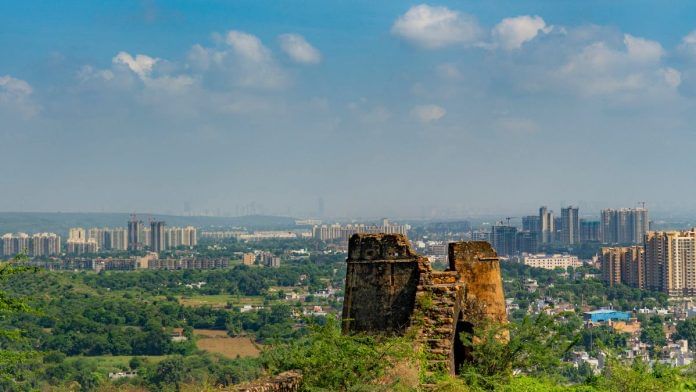Gurugram: Lush green fields, orchards and minimal noise pollution. The bustling city and its skyscrapers are visible, yet far enough. For some residents of Gurugram, this is their new reality—their home, workspace, and therapeutic retreat. The Covid-19 pandemic gave them a chance to reset and they took it.
These city folk have built themselves a lifestyle that is undisturbed by constant phone calls from work, without having to navigate through hours of traffic. Instead, work for them means working with the soil and constantly monitoring their land.
They are Gurugram’s latest urbanites-turned-farmers. But they now find, that even the new life has challenges—unpredictable weather, lack of resources, and uncertainty of returns.
“To us farming was, and still is, a process of a lot of un-learning”, says Rahul Katiyar, an advertising professional who, along with his wife Soma Katiyar, farms the two acres of land he has taken on a long lease in Bhondsi village, between Gurugram and Sohna. While still residing in the city, most of the couple’s time and energy is now dedicated to farming.
On the other hand, Shubha Bahl, about 10 km away, has been living on her 10-acre farm since 2022. “I am a person of many dreams and I have been able to follow most of them. Farming was never one of my dreams,” she says.
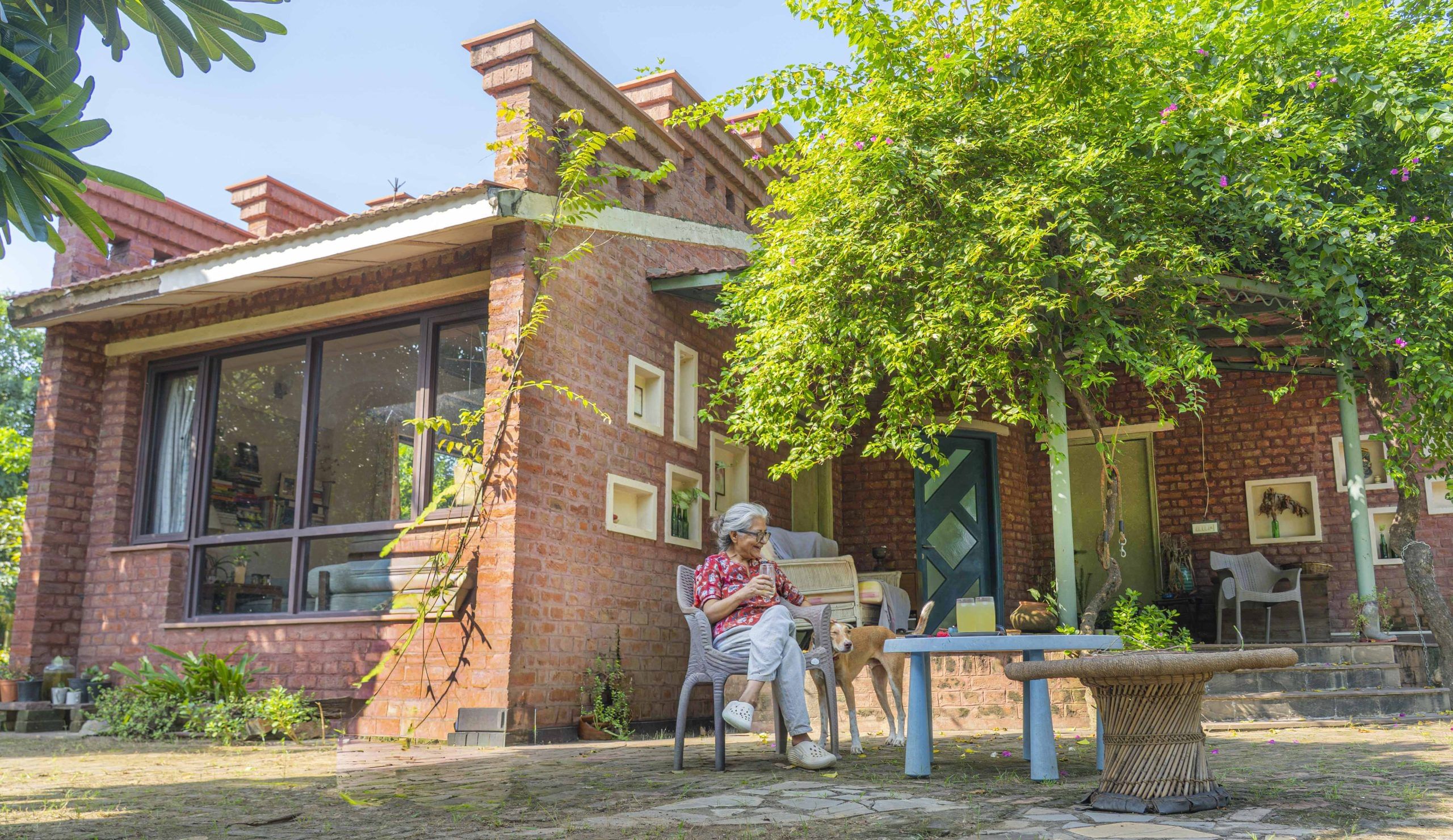
Shubha who spent nearly 20 years as a costume jewellery exporter along with her husband, says, “This (farming) came about during COVID-19 when I was at a loose end and really didn’t know what to do with myself.”
Rahul Katiyar adds, “I think COVID-19 gave everyone a chance to try something new. We were in a bad place in 2020 since we had lost a lot of people to the pandemic. This was when we started farming, and it healed us.”
Travails of a newly-minted urban farmer
The Siris Tree farm as it is called, was named after the huge siris tree that had been there when the Katiyars acquired the land.
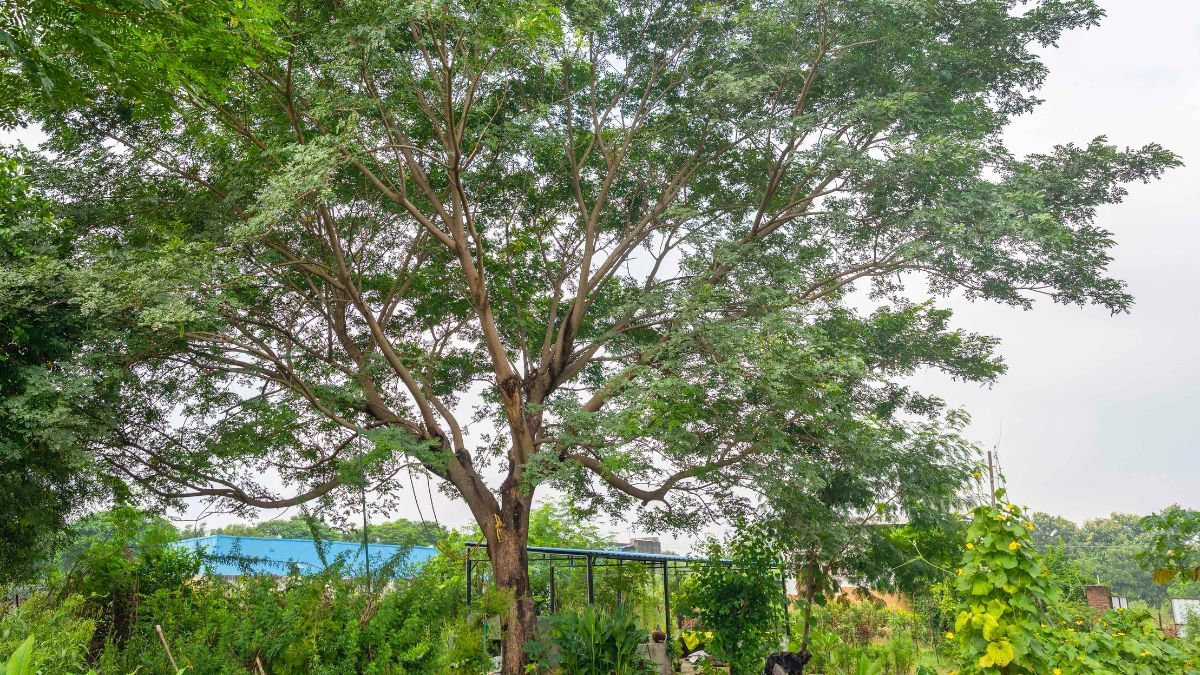
“The tree is like a sentinel that has presided over, seeing the land evolve—from growing only one or two crops, to now, when we have allowed the soil to replenish, discontinued chemical enhancements to the soil and allowed multiple crops and fruits to flourish”, says Rahul.
“These are like some 80-odd children, each with their own moods,” said Soma, referring to the floral diversity. “Only 10 percent of farming is actually in our control—which involves figuring out what herbs to grow under which tree, which crop to grow in a particular season, and so on. For the rest, nature takes its own course. It’s an organic ecosystem replete with birds, insects and other small animals,” adds Soma while pouring the fragrant blue tea made from a locally-grown herb.
“Our day jobs are something that we can now do with our eyes closed. Farm work, on the other hand, takes a lot of effort and energy. We get our hands dirty. We have to truly immerse ourselves in it,” says Soma, an advertising professional like her husband.
Reflecting on her previous job, Soma says, “I used to take four modes of transport to reach Hauz Khas from Gurugram. Those were five days in a week for me. I can’t go back to that anymore.”
“Well the first and foremost thing is very basic—water,” says Shubha whose farm is on the other side of the hills that overlook Sohna town, almost on the border between Gurgaon and Nuh districts. “Our tubewell doesn’t have enough water to cater to the farm’s needs. Many summers, I have had to buy water from tankers. One recent June, I had to get a 300-foot pipe to reach some of my trees which would otherwise get burnt in the heat. It is a lot of work,” she adds.
“But ultimately, it’s worth the while,” says Shubha, who feels a sense of responsibility towards all the denizens of her farm.
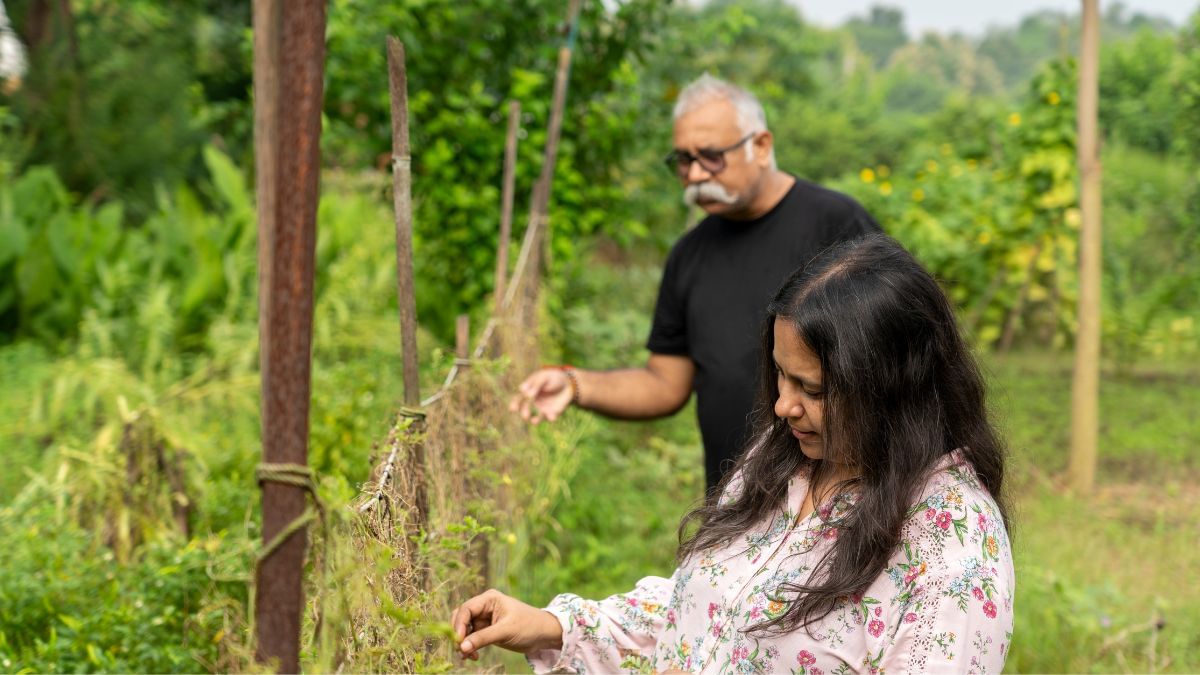
“The farm keeps springing pleasant surprises on us every now and then,” say Soma and Rahul. One summer afternoon, while sitting under the canopy of the Siris tree, Soma remarked how the one thing missing on the farm was a mulberry tree. Months later, the farm suddenly sprouted mulberry saplings. Nobody had planted them.
“There were certain trees we simply wished we had, and the birds seemed to have heard us,” says Rahul, explaining how birds had dropped the seeds of various trees on the farm.
Soma reflects, “The mulberries fruit every summer now, reminding us of the quiet connection between birds, humans, and nature. As a practice, we never cover our harvest —the first right to food is theirs (the avifauna).”
“It’s a relationship built on trust and sharing. When the birds thrive, we thrive too. That is the spirit of this farm,” adds Rahul.
Organic agro-economics—a waiting game
Every Sunday morning, a small group of urban farmers set up their stalls in the heart of metropolitan Gurugram. The Gurgaon Organic Farmer’s Market as it is called is a not-for-profit collective where 30 active participant-farmers from a 15-km radius get their fresh, seasonal produce for consumers.
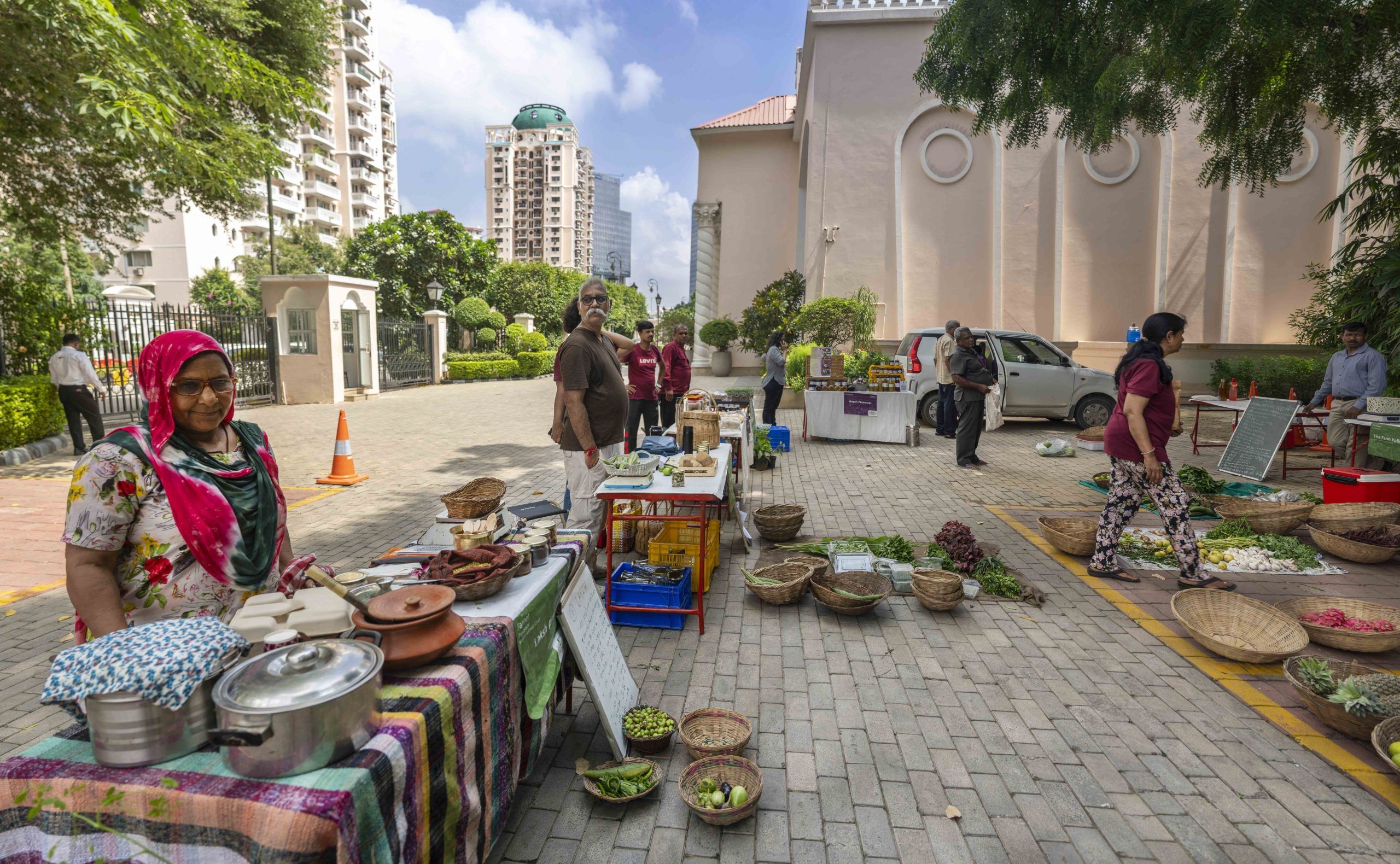
Both the Katiyars and Shubha have stalls here and are willing to learn, share, and connect with a like-minded community.
“Originally, we started farming for ourselves, not to sell. But since we had so much, we decided to introduce our crops to other people,” says Rahul whose mantra for selling is “everything from the root to the shoot”.
Describing it as a learning curve, he says, “If you come in with the mindset that I will start a business and make money, you will fail.”
“The first few years were investments without returns. You will fail until you learn why something isn’t growing,” adds Rahul.
Shubha, who also sells her produce in the farmer’s market, is content with a slower pace of things. “Of course the intention to make profit is there, but money isn’t my motivation,” she says, adding that with the savings she has after working for so many years, she can live out her years peacefully.
“I have simply been putting in money without getting much in return. In fact, for the past 4 years since I have been here, I haven’t reached a breakeven in any year, just a few months here and there,” she adds. “The fruits and vegetables certainly won’t give you a stable income. Also I am neither too good nor very keen on marketing.”
With all the crops, fruits and cattle that she manages, Shubha has recently added a two-room, fully functional cottage on another part of the farm. The cottage itself cost her Rs 50 lakh, and there are fixed costs towards maintenance that need to be borne. “Hospitality, as you know, requires one to engage with the guests and cater to their needs and I am somebody who values their space and peace of mind above all. A few families that have come to stay here are those who came via word of mouth.
“Log aaye toh acha, naa aaye toh aur bhi acha (if guests come then good, if they don’t, even better)—that is my mantra honestly,” she adds.
“I have tried to convince my children to partner with me on this venture, but I feel everyone has to go through their own cycle. I too took time to finally adapt and accept this lifestyle for myself,” she says.
From rural to urban
Arun Kumar Raghav, a native of Bhondsi, where the Katiyars have their farm, recalls a time when no one noticed this area 10 years ago.
“It is fascinating to see these city people come here and start their new lives as farmers. They do teach us a thing or two about valuing our land and its environment. I am their fan,” says Arun, a practising lawyer in the Supreme Court, referring to Rahul and Soma.
“People in the city, with their hectic lifestyles, find it difficult to spend even 30 minutes on their health and lifestyle but he (Rahul) spends so much time and energy on growing his own food,” he adds.
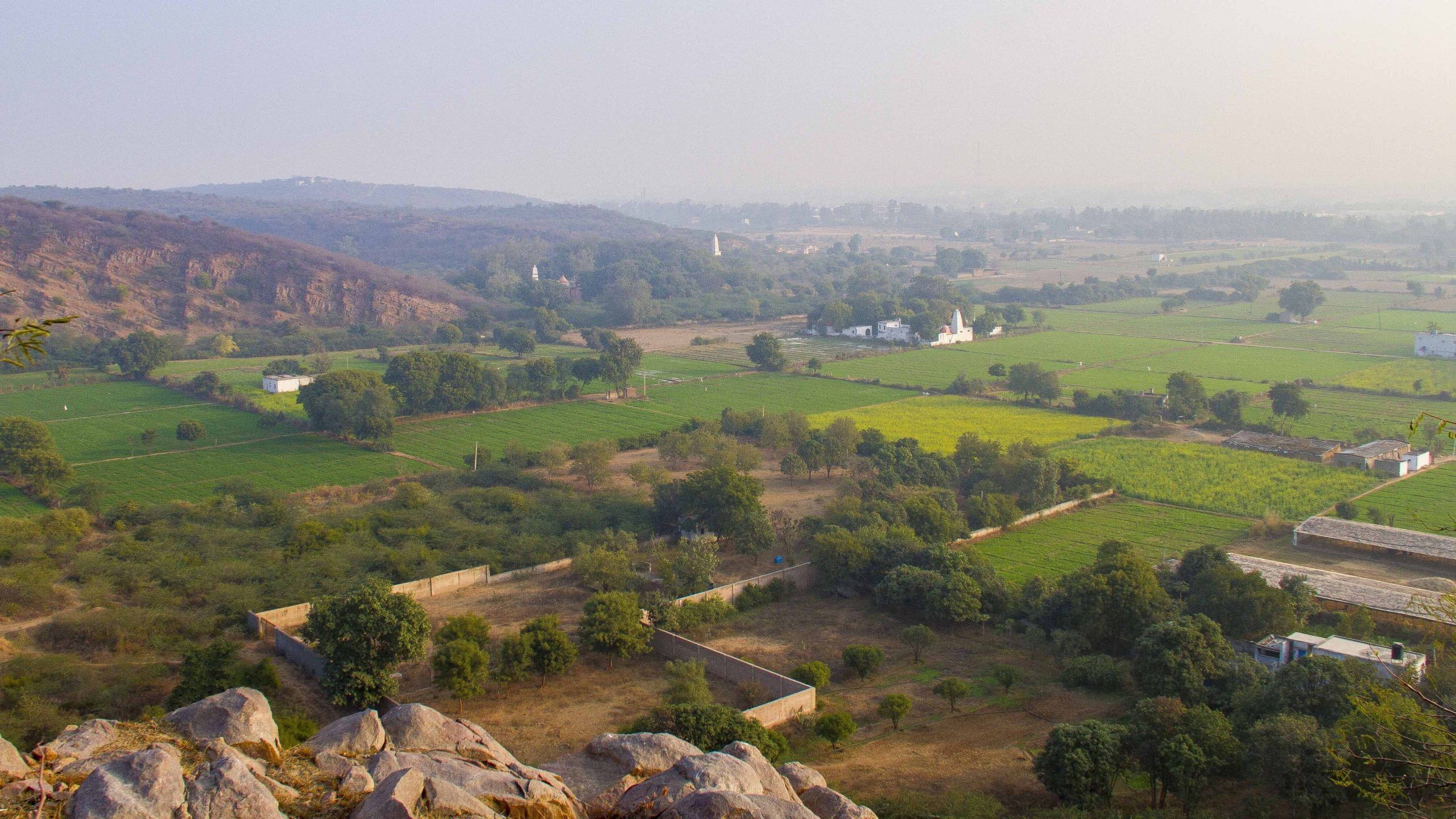
But does the influx of people from the city in any way impinge upon the tranquility of the countryside?
Sarfaraz Khan, sarpanch of Sehsaula village where Shubha’s Farm Folk Project is located, believes otherwise.
“As of now, there are no such farmhouses that disturb the locals with parties and loud music. If they bring their friends here, they do everything within their boundaries,” says Sarfaraz, whose house is just around 3 km from Shubha’s farm. “Moreover, they are giving employment to villagers, so we welcome the development. Because of these activities, the rates of land have also increased,” he adds.
Arun from Bhondsi also believes that this trend isn’t limited to Gurugram. “I have noticed this all across Delhi-NCR in places like Greater Noida, Hapur and so on—urbanites are moving to rural areas to escape the strenuous city life that drains you out,” he says.
When asked whether future generations should aspire for such lives, Shubha is assertive. “Young urban people, whose parents have earned enough money, no longer need to go for corporate careers. They need to address larger issues such as climate and natural resource crisis,” says Shubha.
“My daughter often accuses my generation of doing all the damage and then expecting her generation to reform. But I tell her that there needs to be a start somewhere,” she adds.
“One should live on the soil and work on it. But first you need to cure the earth. This isn’t the future, it is the present,” she says.
Shaz Syed and Saksham Thakur are alum of ThePrint School of Journalism and currently interning at ThePrint
(Edited by Viny Mishra)
Also read: No other city is like Gurugram—‘so mismanaged, yet so highly spoken of’



